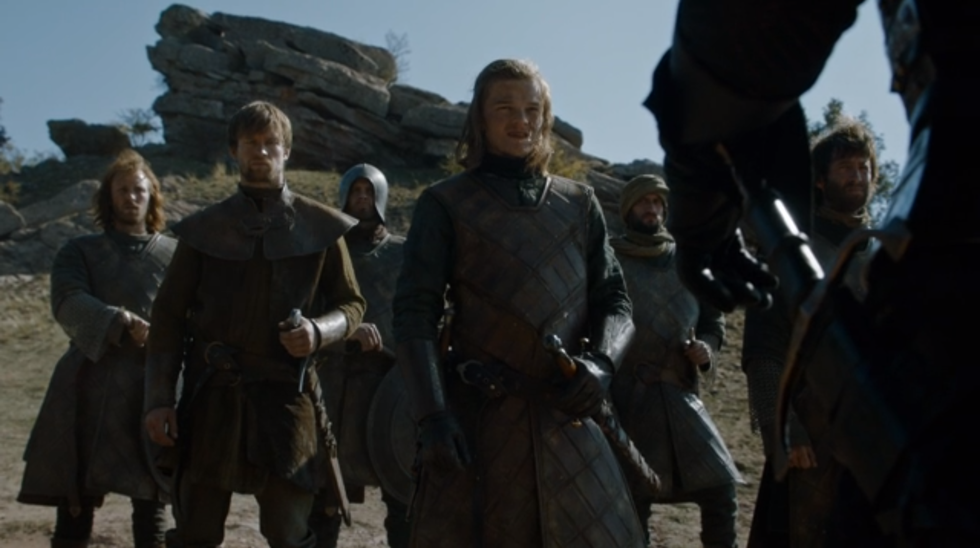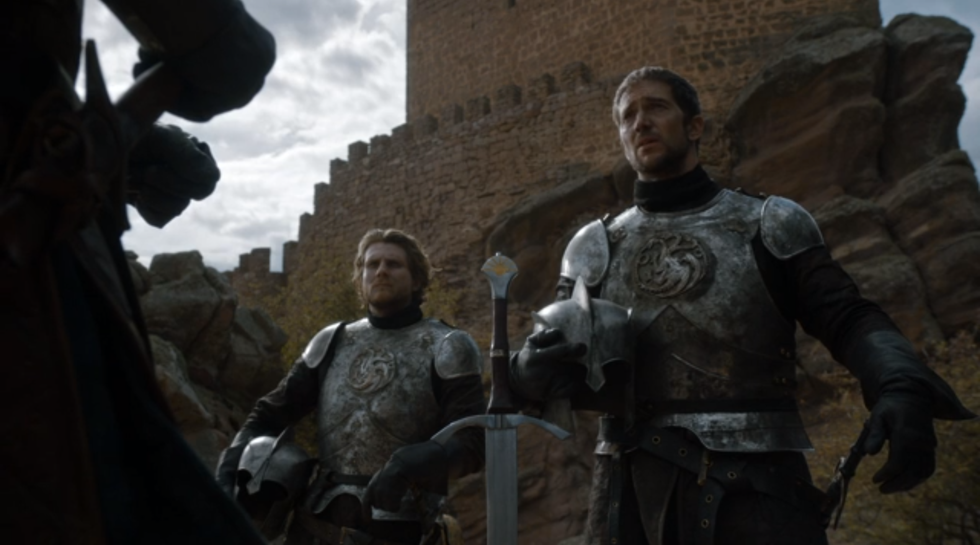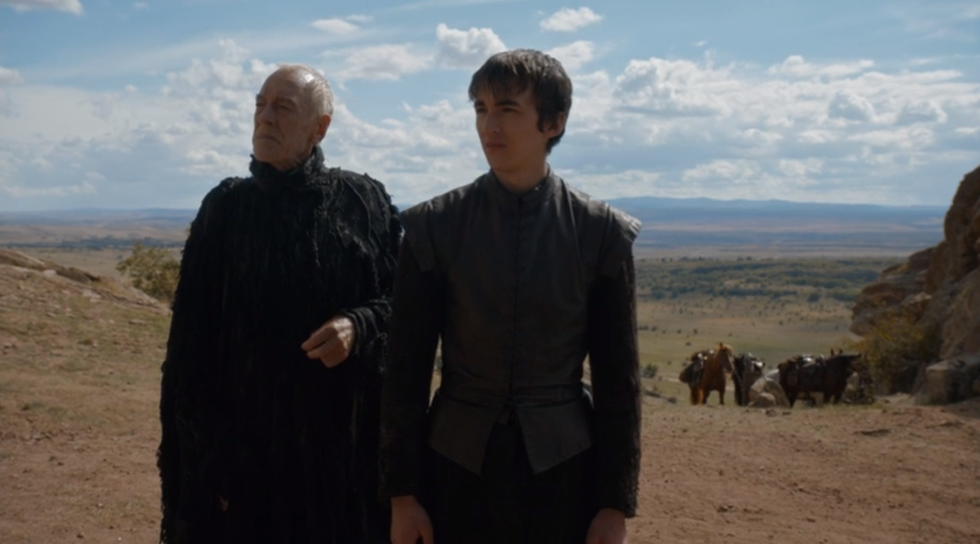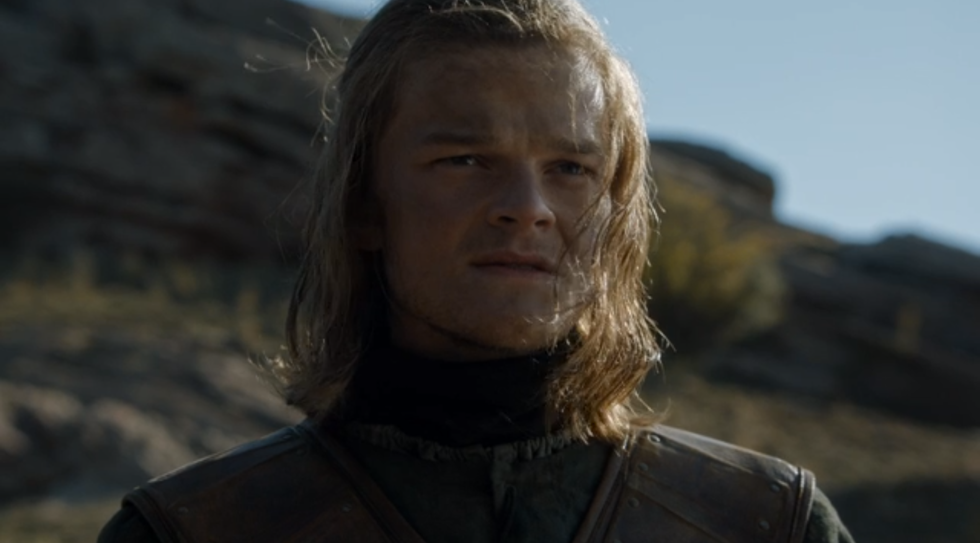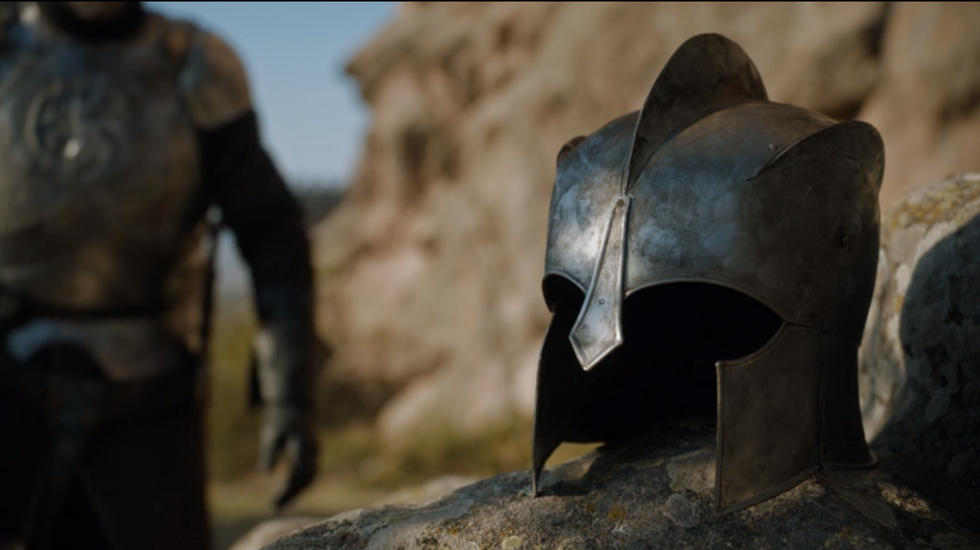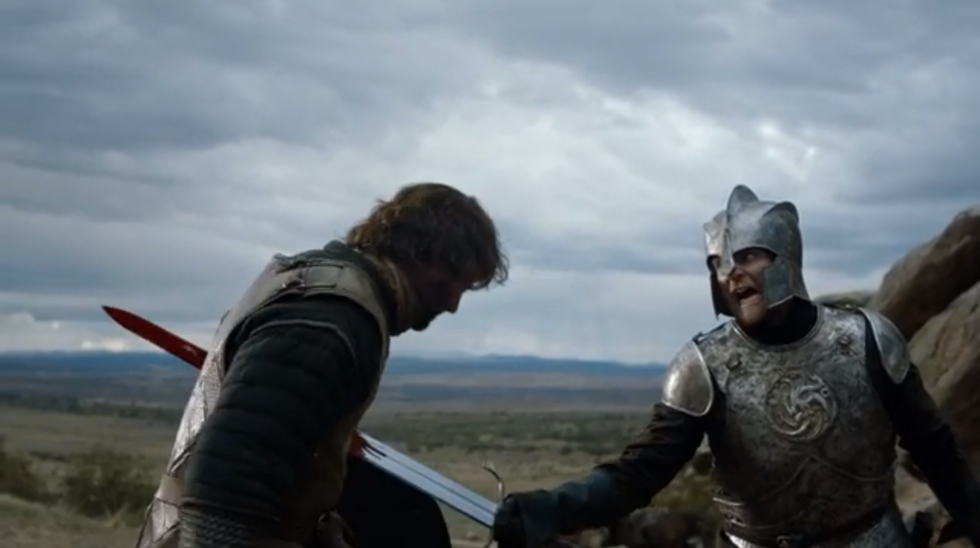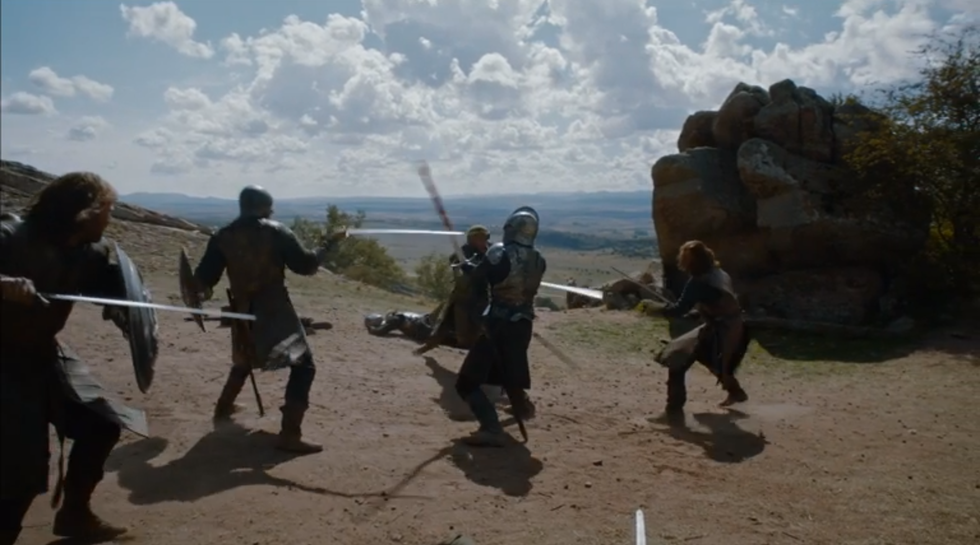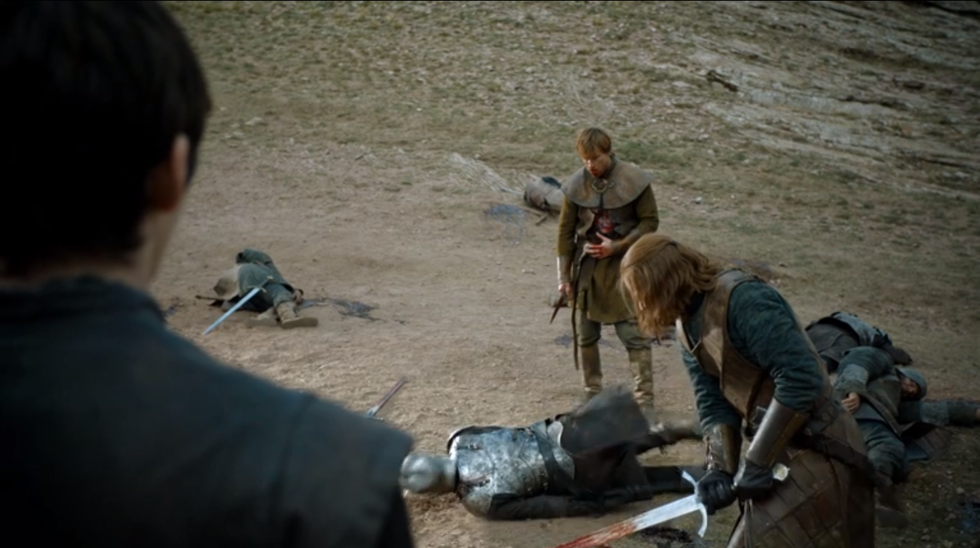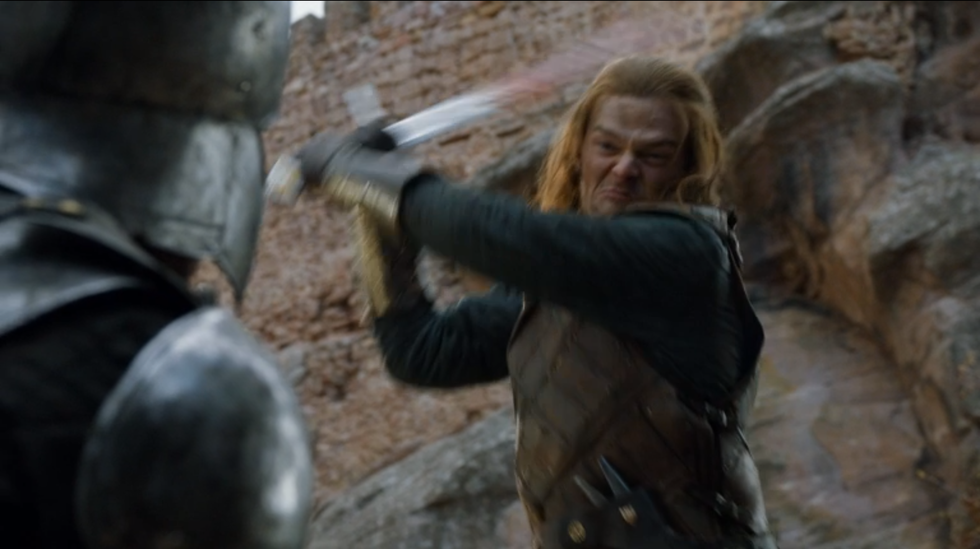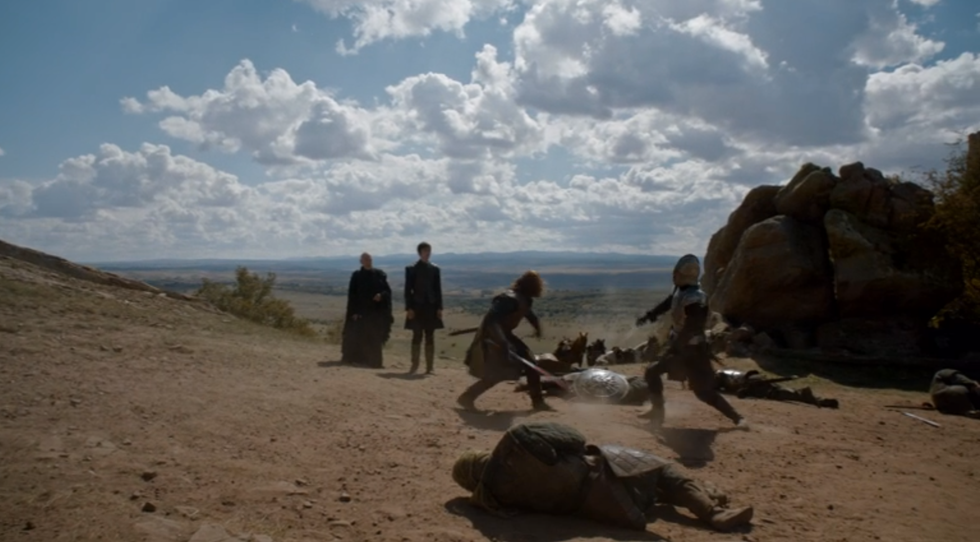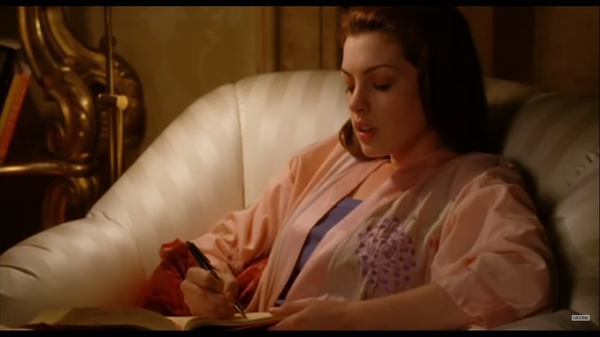Season six of the hit and critically acclaimed television drama Game of Thrones is extremely different from the past seasons, from the writing, to the wardrobe, to the pacing. All of this can seemingly be caused by the fact that this is the first season the show is officially “off book”, meaning it’s the first season that the story lines have caught up to their book counterparts and all that goes forward from here on our television screens is most likely not anything planned by George R.R. Martin, nor will it likely be how things pan out in the books. Thus, for the first time, the show has taken it’s own direction completely.
The ultimate question, however, is whether it's for the better or for the worse? Many people have stated that without the timeline of the books holding the show runners back, not that they paid much regard to the timelines before (Gilly’s baby anyone?), it will allow them to be free to properly plan out the rest of the series. In reality, this off-book pacing seems to be forcing itself to meet an endpoint at an unparalleled and unearned speed. Plot lines are being introduced and thrown out within the same episode. Characters return to our screens after seasons of being off of them, only to die. Season six feels like a fast-paced set-up to the endpoint, rather than an introspective and creatively told character drama with an emotional and dramatic arc contained in it’s own season. I believe it’s to its major detriment. Getting from point A to point B has been the goal of the show for several seasons now, forgetting that the journey along the way is what actually matters the most in storytelling. Thus, in order to get to point B, quicker than planned and strategized, they have begun to haphazardly thread in important story lines and backstories that should have been threaded in a while ago in order for them to have the proper weight and emotional significance in their place within the story. One of these threads, and perhaps the event that book readers were most eager to see adapted onto their screens, is the sequence known as “The Tower of Joy.” We can examine the scene as an adaptation of it’s book counterpart, as well as it’s success as standalone storytelling to discuss what about it was a successful adaptation, and if its potential and importance was successfully conveyed.
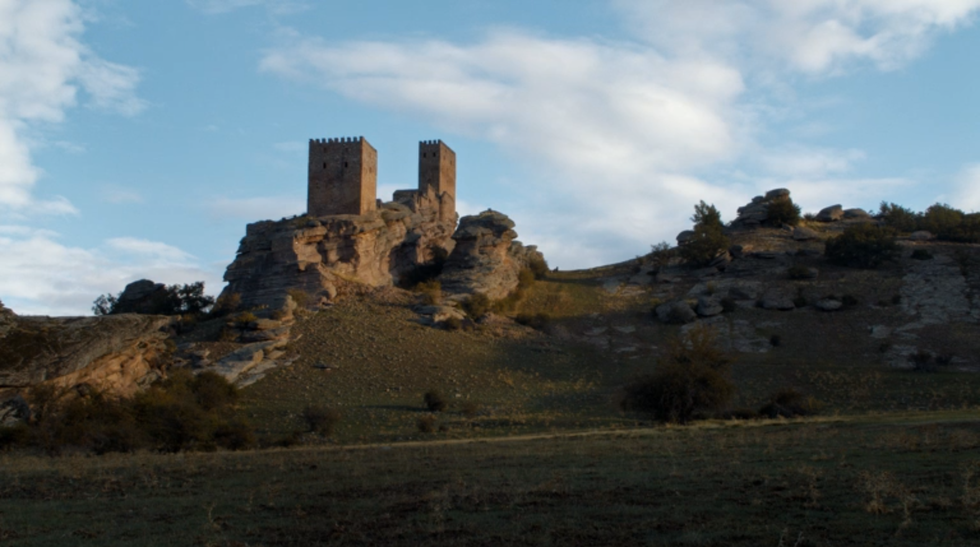
The Tower of Joy is what Rhaegar Targaryen aptly named the tower in the red mountains of Dorne that he stole with Lyanna Stark, sparking what is eventually known as Robert’s Rebellion. This place is representative of an event that became the catalyst that started a war. Every fiber of it, every moment of the scene, is characteristic of Ned’s weariness that plagues him following a long war of futile bloodshed and killing.
Robert Baratheon was betrothed to Lyanna Stark from an early age. The two were meant to be married and Robert loved her, or at least believed he loved her. He certainly aggrandized her and fell in love with the image of who he believed Lyanna Stark was. Thus, sometime after the tourney at Harrenhal when Rhaegar supposedly kidnapped her, “kidnapping” was all anyone saw. When her brother, Brandon Stark, heard news of her disappearance, he went straight to Kings Landing to demand that Rhaegar pay for what he has done. The story that Sansa recites to Little Finger in the crypts of Winerfell in Season five is the story everyone believed. It was the common understanding - for the thought of a woman making her own choices or having agency in the situation would be unheard of, she would do her duty and marry Robert - that Rhaegar had kidnapped Lyanna and raped her to death. Hence, all the men around her, boasting of toxic masculinity, riled themselves up to be her savior. Brandon’s father was called to court, to supposedly oversee the charges laid against his son, and there, the “Mad King” Aerys Targaryen killed both father and son, demanding the heads of Ned and Robert next. That is when Jon Arryn called his banners to fight, protecting his two wards whom he loved like sons. Ironically, Lyanna “She-wolf” Stark, most likely didn’t need a savior.
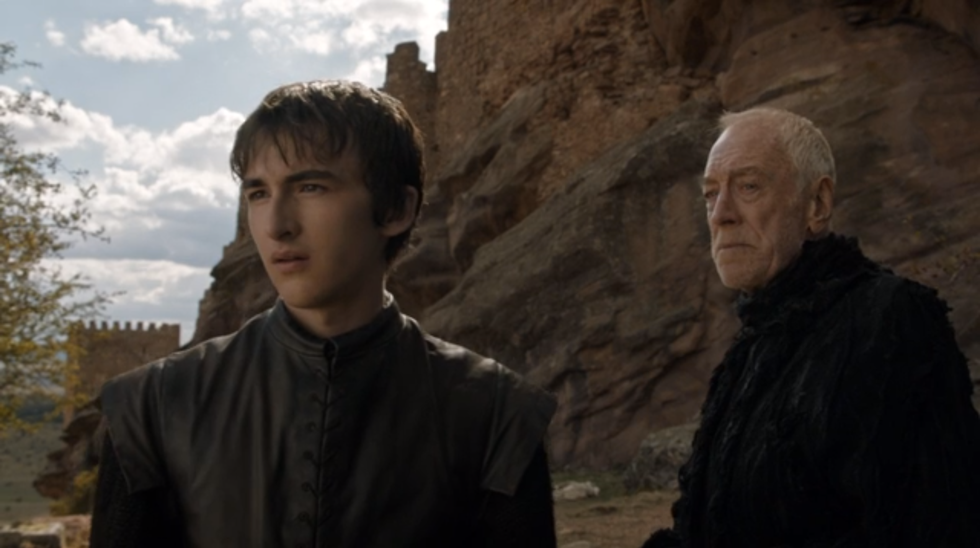
The fever dream, as presented in the books, coincides with Ned Stark's narrative for it's directly reflected in his character’s actions, personality, and mindset. It’s an important event thematically for Ned, as he recalls the moments before the fight as well as the moment he “promises” Lyanna in the tower. Those are the moments that hold the most weight for him, for they are evocative of the futility of war, the man Ned Stark becomes, and are also beautifully characteristic of the lore of this fantasy story Martin is so intent on telling through deconstructing the fantasy tropes we’ve come to know.
The lore of the story and the world is so often missing in the television show and it is sadly to its detriment. Leaving out the vastness of this world and its background, not only helps detract from making this story and world conceivable to its audience, but also lessens the weight of many characters' actions that come in direct reaction from hearing about the tales and heroes of their past. The Tower of Joy and all of Bran Stark’s visions this season are a perfect and subtle way to work these layers in. But the woes of these flashbacks on our television are that they not only don’t feel very important, they also don’t feel any different from what we are normally seeing. There are no visual indications that they are flashbacks or a time separate from the present day storytelling being told, which is not only confusing to the audience but also a missed opportunity for the Thrones team to get creative with their fairly structured and beautiful but simple cinematography. There is also no indication in the overall feeling conveyed in the flashbacks that the times are different, the people are different, and the overall climate of the story, be it in a time of a “Mad King” like Aerys, is different than what we know now. One of few benefits of flashbacks in a visual medium, for they are often a cheap and easy solution as even the creatives of the show often say, is that you can use them to parallel and contrast directly to what is the primary storyline. They have a real opportunity to do that here with Bran, especially seeing as they aren’t limiting themselves to the way his powers work in the books. Without his visions and flashes into the past and future, having to be in direct approximation to a weirwood tree, they are free to explore any and all moments of the past. With that comes the responsibility that all of the flashbacks chosen have to be of the utmost importance and relevance to the current story they are telling. By appropriating the fever dream and using it as a vision of Bran’s, its placement also needs to have just as much significance in relation to the characters and story it is affecting as it did in its original placement. That begs the question, is it simply too late to put the Tower of Joy on our screens? Thematically, probably. But in terms of the characters it could correlate to, especially Bran, seeing visions of people and places he deemed so far gone, do hold a specific, albeit different, kind of sentimental weight.
One of the places the adaptation seemed the most successful, however, was in its structure. It was frustrating, of course, to see the scene split into two, especially as it cut just before the moment of truth that we were all waiting for, as we were about to see what was actually in the tower. Despite the frustration, it worked narratively to get the show-audience and book-audience on the same page, as well as create more of an importance and relevancy within the situation for Bran. For book readers, the notion of what is in the tower is already important. There’s a whole theory crafted around the very possibility that Lyanna had given birth up there, and Ned Stark enters to find his sister dying with a baby in her arms. After years of building this idea up in their heads, the notion that it will be confirmed is incredibly exciting. Book readers watched that scene with baited breath, counting down the moment 'till we were allowed up in that tower. Show watchers, however, really have no notion of this idea at all. R+L=J has not really been seeded in as it has in the novels. Many non-readers could easily have no notion of the theory existing at all if it weren’t for the amount of areas it is discussed online. Thus, finding out what’s in the tower in the beginning of the scene isn’t very exciting to them. It’s not the draw of the scene. The focus of the scene for them is in seeing one of their favorite characters back on their screen. In splitting the scene into two, however, and building up this notion of whatever lies in the tower being of importance to Bran, we start to feel the same way. We are just as eager and just as frustrated with the Three Eyed Raven for not allowing us to go up there as Bran is, as well as aware of impending gravity of whatever lies within.
The split also creates a priority in the situation for Bran. It makes the scene at least somewhat worth adapting for Bran’s sake in its current place within the story. It sets up Bran’s interaction with the past, and his ability to get lost within it. We’ve seen Bran use his powers as escapism before, with Summer. When he wargs into Summer, he’s living a life in which he can no longer live, walking, running, and hunting. It’s a life he thought he lost, a life that the Three Eyed Raven tells him he can never truly have. He won't learn to walk, but he can learn to “fly” through the past, present, and future. Bran’s temptation to stay in a world where he can walk and see his family again, people who are seemingly gone forever, is not only enticing, but completely understandable. It also highlights just how young Bran really is, and how his youth stands in trepidation of all of this weight and importance being thrust upon him. Thus, when the Three Eyed Raven pulls him out, it sets up a similar framing to where Jojen and Meera scolded Bran for staying in Summer too long. There’s the danger of losing himself, but the prospect of the “life” that exists within these dreams and visions which are too great a call for him. Bran will most likely be visiting that tower once more, perhaps against the guidance of the Three Eyed Raven.
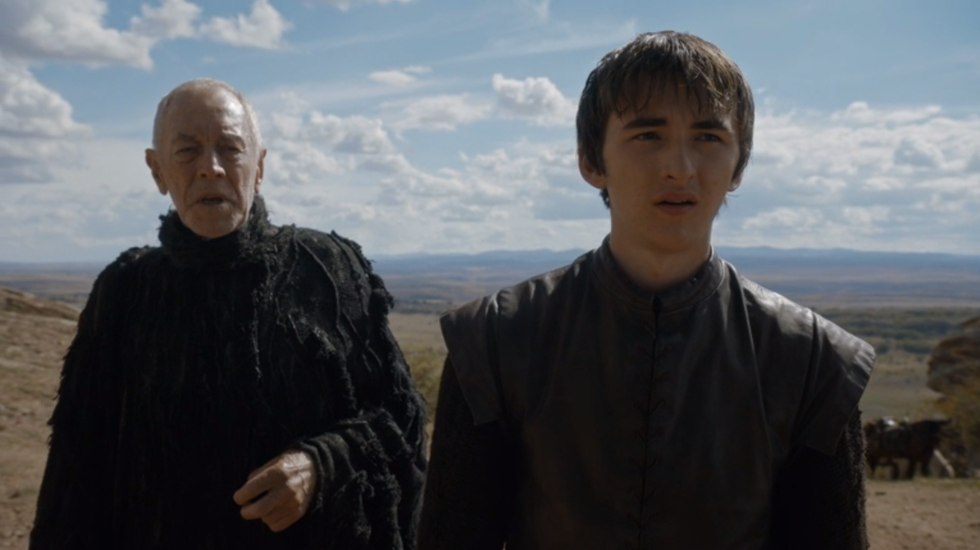
In the book, Martin writes, “Yet these were no ordinary three. They waited before the round tower, the red mountains of Dorne at their backs, their white cloaks blowing in the wind… Ser Arthur Dayne, the Sword of the Morning, had a sad smile on his lips. The hilt of the greatsword Dawn poked up over his right shoulder. Ser Oswell Whent was on one knee, sharpening his blade with a whetstone. Across his white-enameled helm, the black bat of his House spread its wings. Between them stood fierce old Ser Gerold Hightower, the White Bull, Lord Commander of the Kingsguard”.
On the show, they appeared not remotely noble nor legendary. They were painted as the “bad guys,” in our tale. The Kingsguard are meant to be the most honorable men, pledging their life to their duty and their king until their death. It is a vow that is respected and honored. It is not until after Robert took over, that the notion of a true and honorable Kingsguard became laughable. In fact, seeing what the Kingsguard used to be not only characterizes the state of the Kingdom now, but also is essential in understanding one of our main characters, Jaime Lannister. His reputation precedes him and it’s because of these epic Kingsguards that people view what he did as a deviance. The fact that Jaime slew his own king is seen as deplorable and it's why everyone calls him "Kingslayer" behind his back. It's a slur, not a legacy. Thus, the men we see here are meant to be the best of the best. Arthur Dayne himself is just as legendary as his sword.
Martin evokes this when Gerold Hightower states "The Kingsguard do not flee. Then or now.” It’s inclusion would have greatly colored the story and would help to make this fight not so black and white; of the good guys versus the bad guys, giving dimension and weight to both sides of the situation, all the while furthering the theme of the futility of war. After all, what does it say about the current climate when even the 'Mad King' Aerys Targaryen's Kingsguard are meant to appear honorable and knightly. Arthur Dayne's "Now it begins," is then meant to rev you up, exacting the integrity and the weight that comes with someone declaring that they will put their life on the line to do their duty to their prince, not a moment of badassery that the show played it for. These are meant to be men doing their duty, and there’s a nobility and a sadness within that.
With that in mind, there’s the focus that the show put on the sequence versus what the weight and focus of the event was in the books. On the show, the fight was everything. It was in every trailer and it was the moment of the episode where we were all meant to look around at each other and proclaim just how awesome it was. In the books, the fight is not even described. If that does not explain the discrepancy that was spotlighted on our screen versus the moments that Martin chose to focus on in the books, nothing will. The fight isn’t important. We know what will happen and so do the characters. It is the before and the aftermath that are worth exploring. Granted, I understand that it is a main stream show. The fights and “cool” moments are to be expected, however, it seemed depicted for the sole purpose of feeling “cool.” This fight takes place at the climax of Robert's Rebellion, following the all too famous "Battle at the Trident," where Robert smashed Prince Rhaegar Targaryen down with his warhammer. A lot of people died and Ned walks into this hoping to finally end it all and reach his sister. When he confronts these men, who are honor bound to do their duty, and he knows that they will, he tries in every instance to give them an out. He constantly mentions what happened. Their king and prince died, their queen fled. He gives them every moment to do the same, all the while sadly knowing these are the type of men who will “never flee,” and more countless blood will be spilled. The weariness of this war and the death didn't feel present. Thus, the dialogue itself, most of it lifted and changed around from Ned’s dream, felt rather stilted due to its lack of context. The fight, which was meant to be a true tragedy, ended up as an epic.
Speaking of Ned, his place in this scene and the view of him, with which we come out of it, is vastly different than how he was painted before. It only further detracts from the scene and his characterization. Ned, if anything, is flawed for being so honorable. It’s his downfall in Kings Landing and in this scene, his honor to save his sister and keep his “promise” to her affects all of his actions moving forward.
"No," Ned said with sadness in his voice, "Now it ends." Speaking of the frailty and desperation in this situation of men who are haggard and tired after all of this fighting and bloodshed is important and it says a lot about who Ned is and what makes him understandably the person he was in Season one. He's sad to shed more blood, but he knows it's what must be done, for these men will not forsake their vows, and it’s all he can to to reach Lyanna, his real stake in this war. In the show, this line is played to highlight the epic swordsman we believe Ned Stark to be. It’s almost bragging, in a sense, that he knows he can beat these men, and we’re meant to get hyped up to see a sword fight of seemingly epic proportions.
The framing of Ned Stark overall felt very odd. During all of this, Bran remarks that his dad had told him this story countless times. It does not seem in the wheelhouse of the honorable Ned Stark to brag about slaying Arthur Dayne, the Sword of Morning, yet that is how Bran presents it. In books, it’s not even in the realm of possibilities, for Ned even remarks how he could not have done it without the aid of Howland Reed. He’s not one to lie to his children and certainly not one to glamorize himself or events of the past. When we see that Ned is suddenly backed into a corner fighting Dayne, however, Reed jumps up behind the Sword of Morning and stabs him in the throat.
Bran is affronted because, one, he thought of his father a better fighter than Dayne and, two, that Reed just stabbed him in the back. In a show that is sometimes convoluted with toxic masculinity, this seems a stab in that direction as well, for Bran was so disappointed in his father's weakness. We are meant to be as well. We're meant to look at this scene with sadness, as perhaps our hero is not as great as we thought he was. He told Bran of all of these brilliant, legendary stories, only for Bran to now find out that he lied and didn't kill Dayne in the "honorable," way. However, if Ned Stark was anything, he was honorable. After all, that is what got him killed. Ned's placement in the story is meant to show us that people like him cannot continue to exist in this kind of world when they start to play the "game of thrones," and in attempting to break down that framing, it makes the narrative lose some of its weight. That is how Martin dismantles the honorable hero trope, rather than what is apparently the show runners version of subversion, where that honorable hero is painted as something, not only out of character, but diminishing and retractive of any character arc that has been established and essential for the audience's understanding of the world.
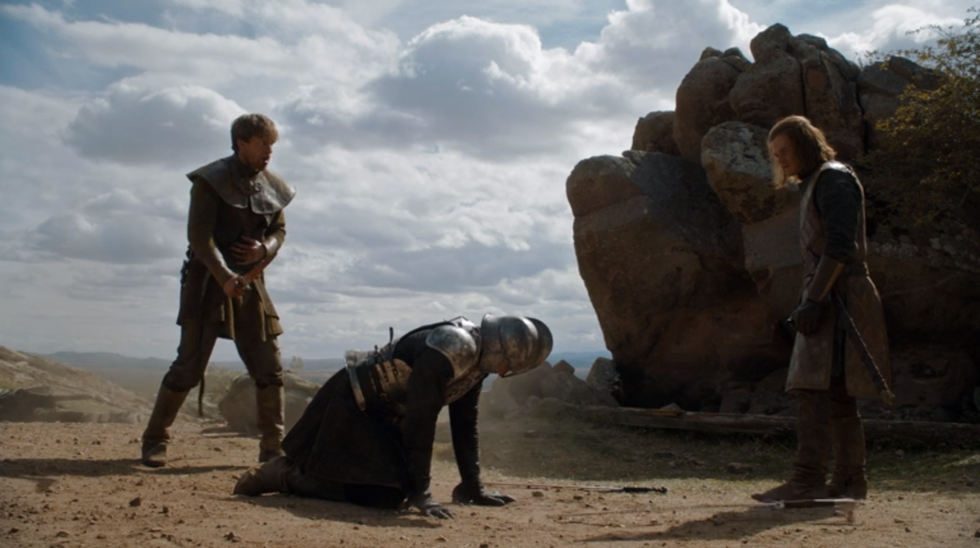
The scene, because it is a dream, is very surreal and full of hypnagogic images. Using this direction on screen, for all of Bran’s visions in fact, could be breathtaking works of art and also help to distinguish these visions as just visions and metaphorically significant events. Martin describes Ned’s party in visually flooring imagery. “In the dream they were only shadows, grey wraiths on horses made of mist.” These figures could beautifully contrast this image of the Kingsguard that he paints. “Yet these were no ordinary three. They waited before the round tower, the red mountains of Dorne at their backs, their white cloaks blowing in the wind. And these were no shadows; their faces burned clear, even now.” Painting this scene, almost with the brushstroke of a romantic painting, with these shadows of men fighting these shining white knights of the Kingsguard, would help detract from the gratuity of the fight, making it something beautiful to watch but symbolically dark. When the fight begins, Ned recalls, “As they came together in a rush of steel and shadow, he could hear Lyanna screaming. 'Eddard!' she called. A storm of rose petals blew across a blood-streaked sky, as blue as the eyes of death.” These descriptions are so sensory and visual. We could have seen these figures of men, one side bathed in shadow, one side shining the blinding shine of the Kingsguard armor, with their swords coming together in a flurry of rose petals, flying across a “blood-streaked” sky. Now that would be visually epic but exceptionally metaphoric.
There was so much potential in this scene and a visual depiction of it. Even with its shift in focus and location in the story structure, there was still a lot to do with it and a lot for it to say thematically. Sadly, it failed to do so. Granted, there’s the benefit of the doubt that it’s not yet finished. We still haven’t seen Bran enter the tower, the moment everyone is waiting for. However, the moments, for the most part, that were depicted on screen, still were the moments in the book that highlighted and ideally showcased the heart of the scene. What was shown was meant to represent the heart of the event and with so much visual imagery to draw from and so much complexity morally and thematically, it was an exciting and important scene to depict. Grievously, its value was grossly misunderstood and what we got on screen only hints at a larger misunderstanding about the series and the story as a whole.




